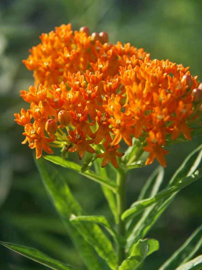Helping Monarch Butterflies with Tropical Milkweed
Published 12:05 pm Saturday, August 31, 2019
The beautiful Monarch Butterflies will be migrating thru our area in the next few months on their way to South Texas and Mexico.
Many of us, including myself, have Tropical Milkweed (Asclepias curassavica) in our gardens for them to feed on along their route, as it is an easy plant for us to find and grow in our area.
It is not a native plant in the United States but is actually native in Mexico and found at many of the local garden centers instead of the milkweeds that are native to Orange County such as: Pineland Milkweed (Asclepais obovata), Shore Milkweed (A. perennis) , Butterfly Milkweed (A. tuberosa). Other U. S. native milkweeds can be found in the publication “Identificaion of Milkweeds in Texas” at https://tpwd.texas.gov/publications/pwdpubs/media/pwd_rp_w7000_1803.pdf .
Each fall, monarchs migrate to overwintering sites, where they form clusters in trees and stay in a semi-dormant state until spring.
However, some monarchs skip the traditional long-distance migration and end up staying in parts of the southern U.S. and California. The year-round persistence of tropical milkweed allows monarchs to breed throughout the winter.
These year-round tropical milkweed patches foster greater transmission of the protozoan Ophryocystis elektroscirrha (OE), increasing the likelihood that monarchs become infected with the debilitating parasite.
Infected adult monarchs harbor thousands or even millions of microscopic OE spores on the outside of their bodies. When dormant spores are scattered onto eggs or milkweed leaves by infected adults, monarch larvae consume the spores and these parasites then replicate inside the larvae and pupae. Monarchs with severe OE infections can fail to emerge successfully from their pupal stage either because they become stuck or they are too weak to fully expand their wings. Monarchs with mild OE infections can appear normal but live shorter lives and cannot fly as well as healthy monarchs.
What can you do?
- Plant only the species of milkweed that are native to your region, whenever possible. See the list above for native milkweed.
- If you already have tropical milkweed in your garden, prune the milkweed stalks to about 6 inches in height during the fall and winter months to discourage monarchs from establishing winter-breeding colonies. Cutting back the milkweed will also help to eliminate OE spores that may be present on the plant. Re-cut the milkweed every few weeks as leaves re-sprout.
- Contribute to scientific knowledge about winter-breeding monarchs by participating in citizen science projects. Project Monarch Health involves volunteers in collecting parasite samples from wild monarchs (monarchparasites.org). Observers receive a report on the infection status of all monarchs they sample. Volunteers can also report observations about winter monarch sightings on Journey North (learner.org/north), and collect detailed information on monarch use of milkweed plants in any season for the Monarch Larva Monitoring Project (mlmp.org).
Compiled by Sheri Bethard, Orange County Master Gardeners Association








